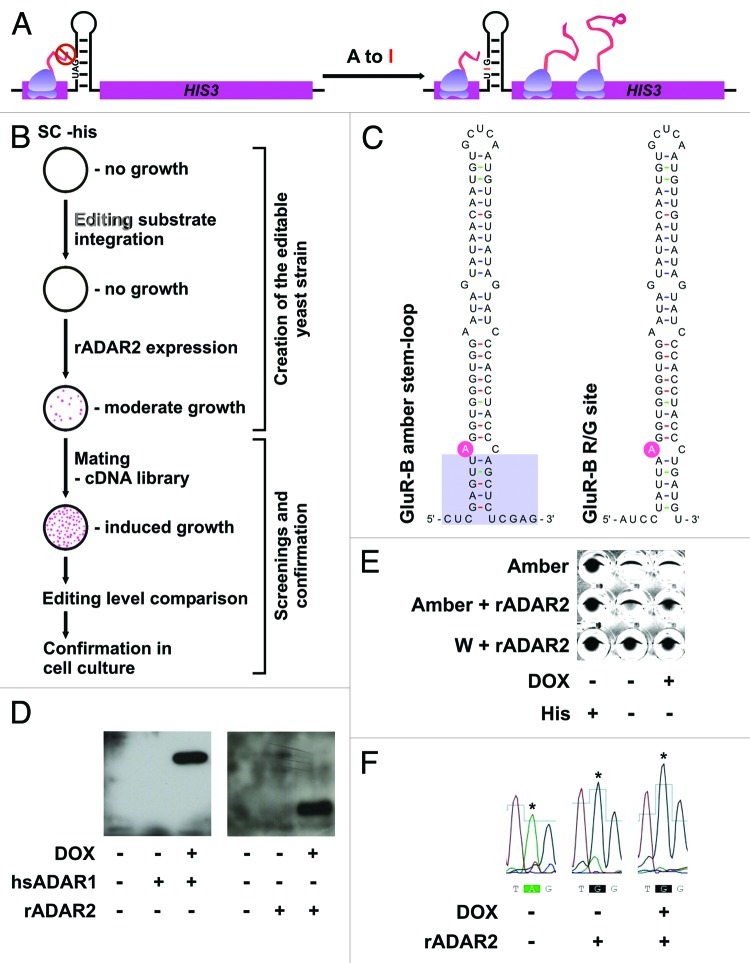Figure 1. Design of a yeast strain for the identification of enhancers of editing. (A) Principle of the reporter system: A stem-loop sequence was introduced into the 5′ coding region of the yeast His3 gene. The stem-loop harbors an amber stop codon preventing translation of His3 unless A to I editing occurs. (B) Construction of the screening strain and steps involved. The editing substrate was stably integrated. Expression of rADAR2 from a cen vector leads to His3 production and growth on medium lacking histidine. This strain was mated with a strain pretransformed with a cDNA library and candidates containing potential enhancers of editing were determined by growth on media lacking histidine. Chosen candidates were further confirmed in yeast and mammalian cells. (C) Comparison of the amber stem-loop and the GluA2 R/G editing site. The changes in the stem are indicated. (D) Test for expression of ADARs from tetracycline inducible vector with and without doxycicline induction by western blotting. (E) Comparison of growth of strains expressing or lacking rADAR2 in different selective media. The identical number of cells was incubated in a 96-well plate with different media. After 24 hrs of growth the cells were pelleted and visualized to determine growth. A strain containing a pre-edited version (W) of the amber stem-loop grows in the presence or absence of His. A strain containing the amber stem loop relies on the presence and induction of ADAR2 for efficient growth on media lacking histidine. The picture was inverted for clearer visualization. (F) Comparison of editing levels of the amber substrate. Total RNA was isolated from the strains lacking or containing rADAR2, with and without DOX induction. RT-PCR and subsequent sequencing was performed to determine editing levels. Expression of rADAR2 strongly induces editing. The edited adenosine is indicated with an asterisk.

An official website of the United States government
Here's how you know
Official websites use .gov
A
.gov website belongs to an official
government organization in the United States.
Secure .gov websites use HTTPS
A lock (
) or https:// means you've safely
connected to the .gov website. Share sensitive
information only on official, secure websites.
